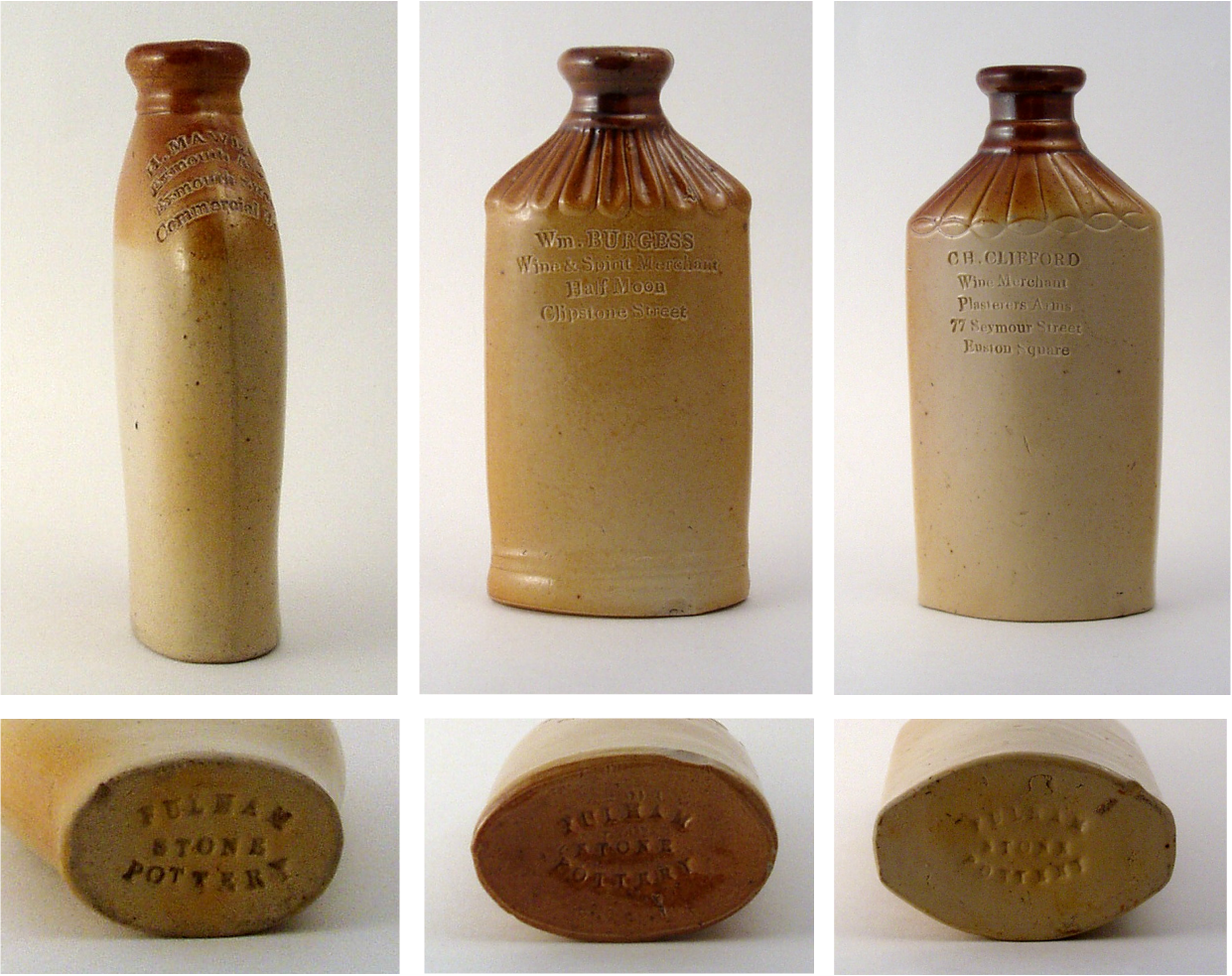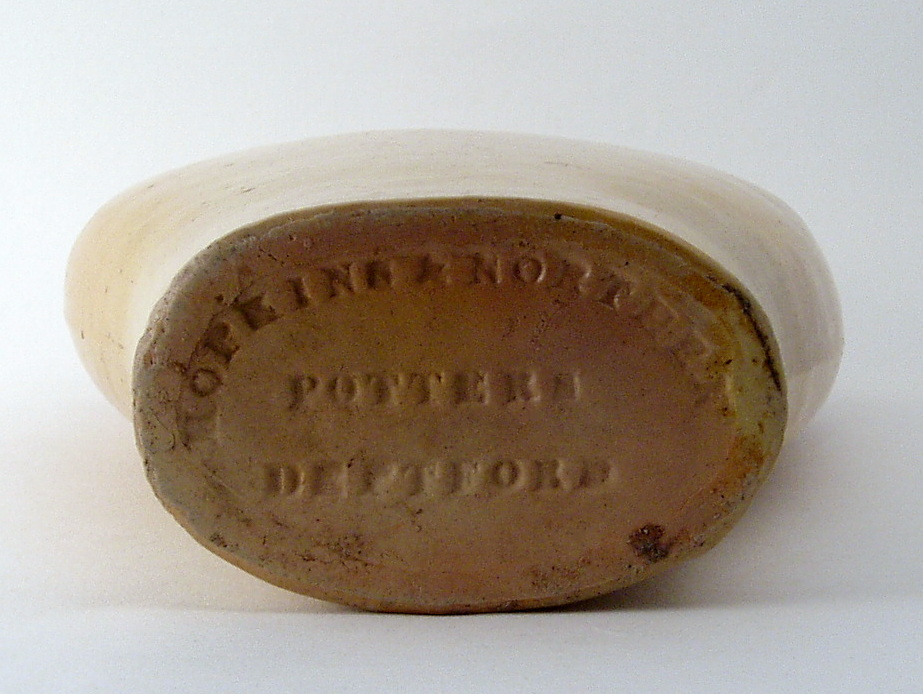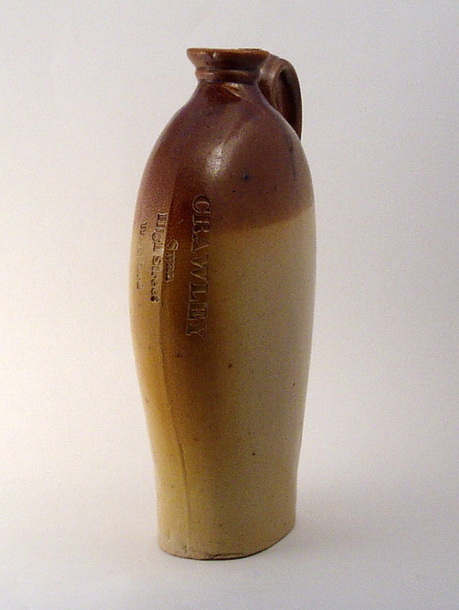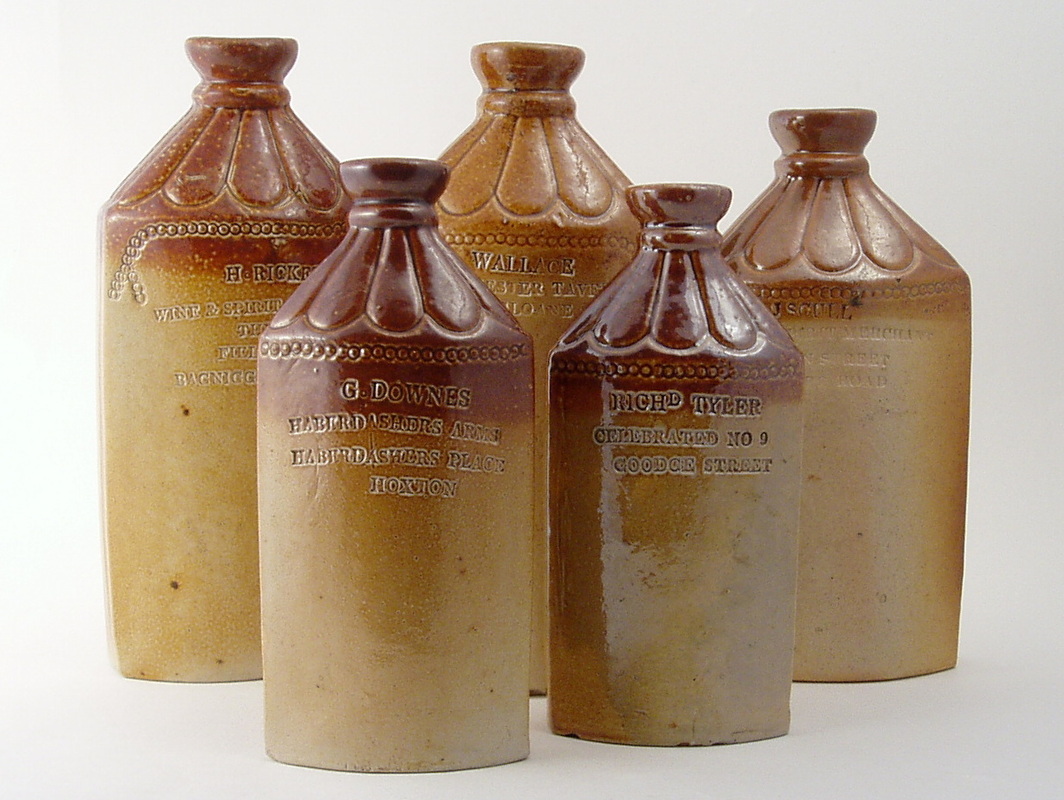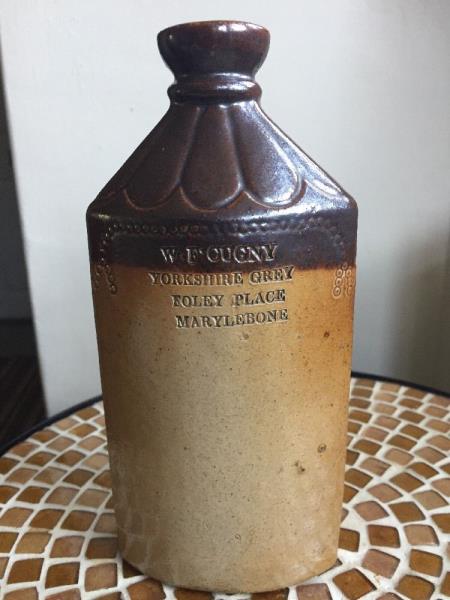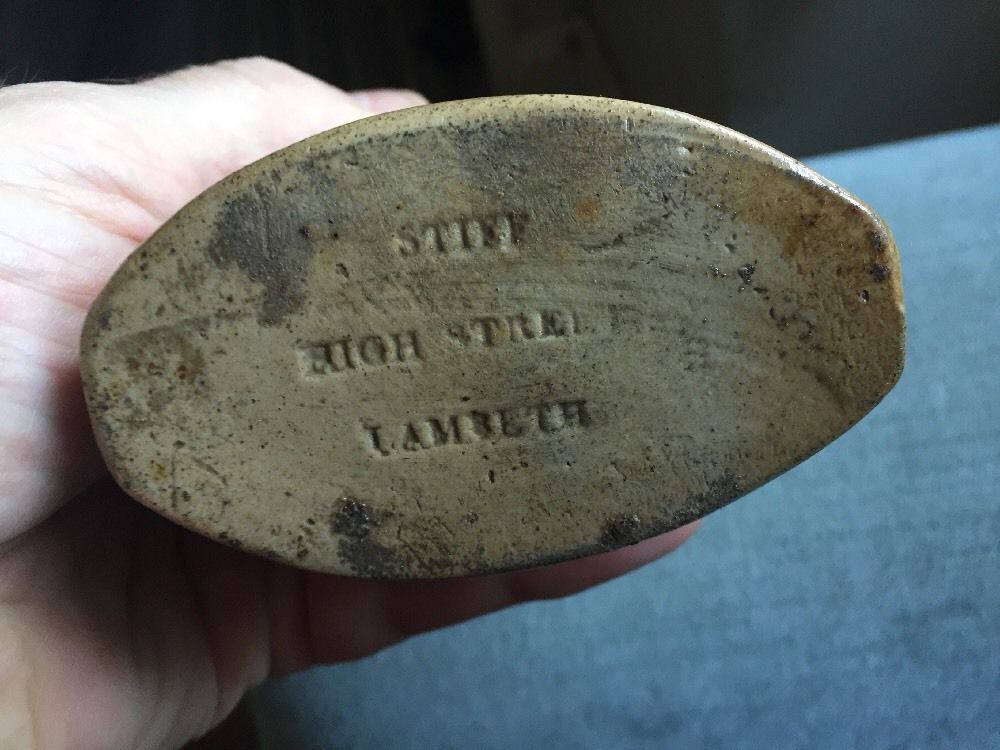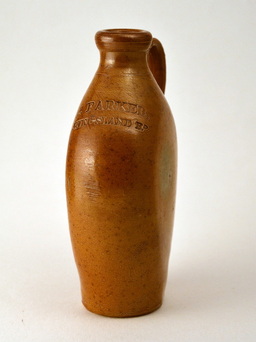WHICH POTTERIES MADE THEM?
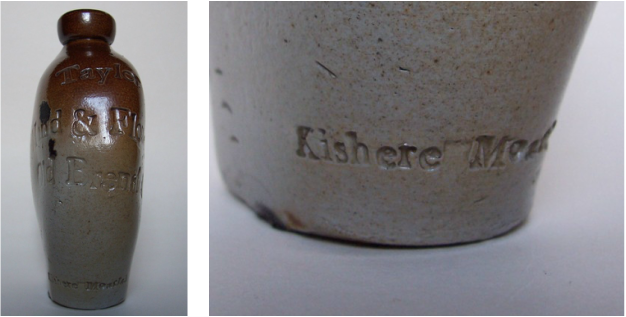 Flask marked 'Tayler/Hand & Flower/Old Brentford', but with the very rare addition of the potter's
mark 'Kishere Moatlak' (Images courtesy D.Hunter)
Flask marked 'Tayler/Hand & Flower/Old Brentford', but with the very rare addition of the potter's
mark 'Kishere Moatlak' (Images courtesy D.Hunter)
A listing of stoneware potteries in 'Stoneware Bottles' by Derek Askey, shows that from the early to mid 1800s, there were numerous potteries operating in London and the surrounding areas, most particularly in Lambeth, Vauxhall, Fulham, Mortlake and Deptford, however, attributing flasks to particular potteries is very difficult, as so few pieces are marked. To the best of my knowledge, there is only one thrown oval flask which bears a pottery mark, and that is impressed 'Kishere Moatlak' [sic.] This flask carries the details of 'Tayler/Hand & Flower/Old Brentford'.
There are several moulded flasks which display pottery marks, the most common being those impressed on their bases 'FULHAM STONE POTTERY'. Oval moulded flasks from Fulham are relatively numerous, but there are also two different moulded rectangular types, as shown in the illustrations.
Three different forms of moulded flask also bear the Doulton and Watts/Lambeth Potteries mark; one being an octagonal form (with a pottery mark similar to those found on 'reform flasks'), one of a fluted shoulder form, and the other a much more decorative pattern, with swags around a name panel front and back and a concave fluted shoulder.
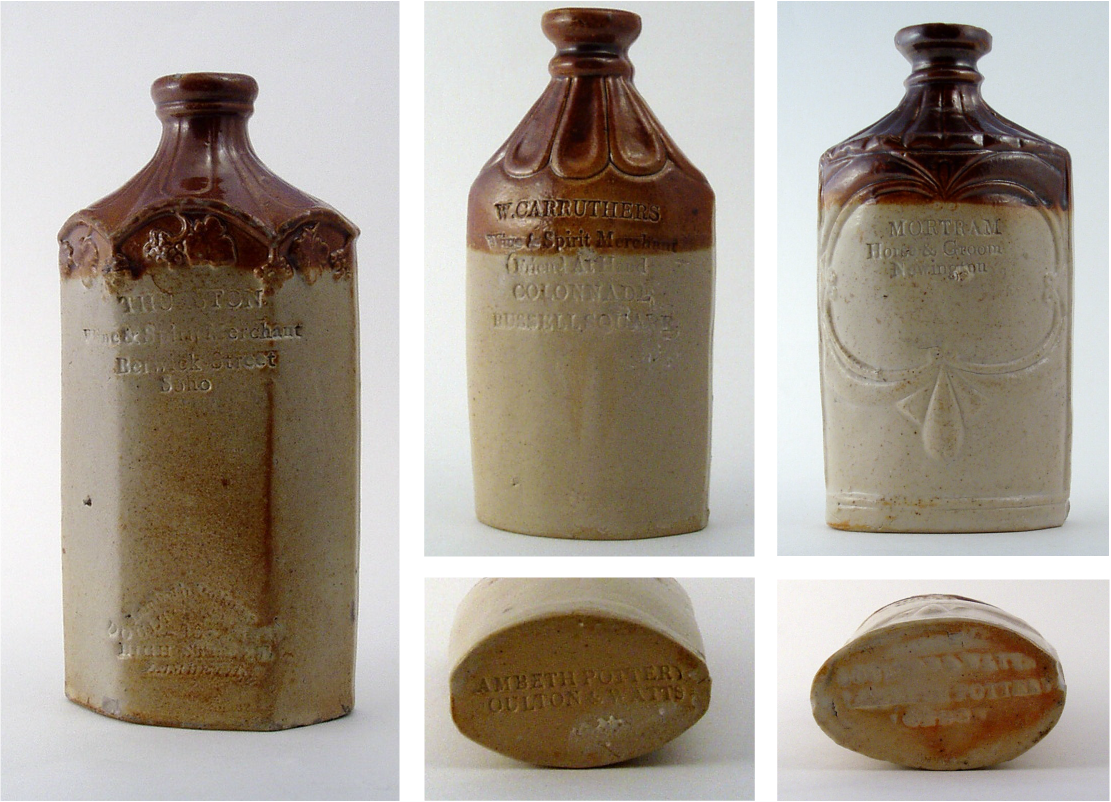
Three different patterns of moulded flasks, each marked 'Doulton & Watts'. The flask on the left bears the pottery mark most often associated with their Reform flasks. The central one is impressed 'LAMBETH POTTERY/DOULTON & WATTS', whereas the flask on the right is marked 'DOULTON & WATTS/LAMBETH POTTERY/LONDON'.
There is one relatively common pattern of flask of which, until recently, I had only seen a Bristol-glazed example, bearing a J.STIFF/LONDON POTTERY/LAMBETH pottery-mark, however, I'm indebted to John Lee, for allowing me to use his photographs here of a saltglaze example. (See images below.) This flask, impressed 'W.F.CUGNY/YORKSHIRE GREY/FOLEY PLACE/MARYYLEBONE' is impressed on the base 'STIFF/HIGH STREET/LAMBETH'. (I should note that there are many flasks of very similar form and detail, which cannot be attributed to this pottery, as can be seen in the page entitled 'Forms'.)
Using colour and texture to link flasks to a pottery is very difficult, as there are numerous variable factors in the manufacturing process, that would greatly affect the final appearance of the flask. The form could depend on the individual potter in each pottery, and this could also evolve over months and years too! Colouring could be determined by the types and mixes of clays used; the mix of the shoulder dip; the kiln temperature; how much salt was introduced into the kiln, where the piece was positioned in it, and what was standing next to it.
It can reasonably be assumed that the majority of flasks used in the London area were also manufactured in the vicinity. There was clearly a significant manufacturing capacity in London with the large number of potteries present. The raw materials including clays for the pots themselves, and the coal for the kilns would have been brought in largely by boat, and presumably by train also, as the new rail network developed. There was already a substantial workforce at hand. The output of the London Potteries was presumably distributed through the area by road, but also further afield by water and rail.
|
It has been suggested that some of the flasks have a similar colouring to the saltglaze wares from the Bristol potteries, and it is conceivable that indeed some could have been made by potteries outside the area, but it would have entailed a further cost in the distant delivery of such relatively low cost wares. There is one delightful little handled flask marked PARKER/KINGSLAND RD. which from both colouring and form, although unmarked, is clearly of Derbyshire manufacture; probably from Joseph Bourne's potteries.
|
